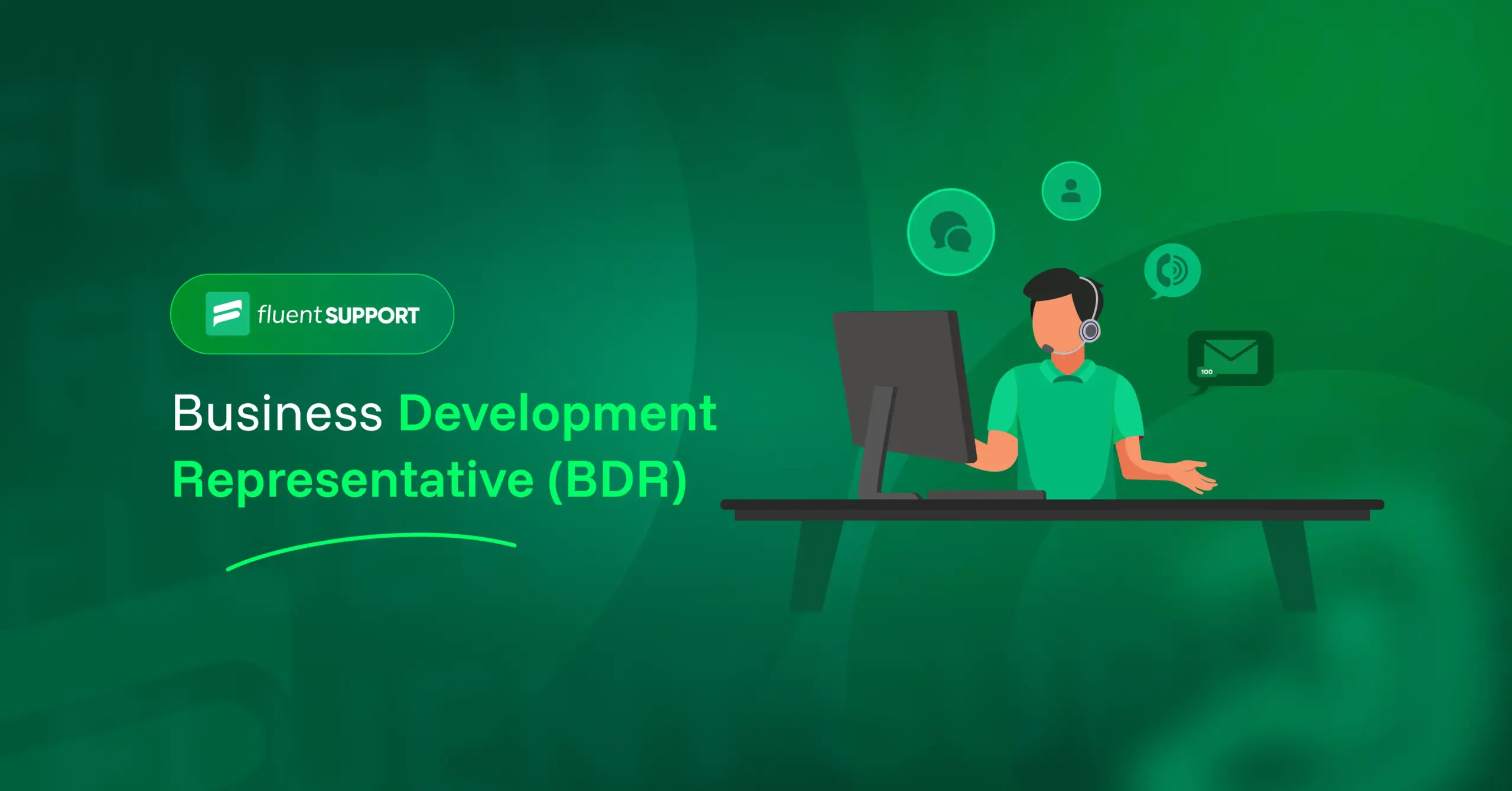
Business Development Representative (BDR): Explained
By Md. Sajid Sadman
May 14, 2025
Last Modified: May 14, 2025
Let’s be real.
Behind every big sale, there’s someone who made the first move.
That someone is often a Business Development Representative, or BDR for short.
The one who turns “never heard of it” into “tell me more.”
In this blog, you’ll learn everything you need to know about this role, including who they are, what they do, how to become one, how much they make and more.

Who is a Business Development Representative (BDR)?
A Business Development Representative (BDR) is the person who finds potential customers for the business and starts meaningful conversations before handing them over to the sales team.
In most cases, a BDR is the first real human interaction someone has with your brand.
They reach out via emails, calls, and events to connect with the customers. Actually, the right ones (lead) who might truly need what the business offers.
Ideally, they determine whether a lead is a good fit for the company’s offerings.
Well, they don’t close the deal. They open the door for it.
In short, the mission of a BDR is:
Find → Engage → Qualify → Hand Off to Sales
Yes, they don’t sell. They guide the right people toward the sales team.
And this is where their real value shines.
On top of that, a Business Development Representative (BDR) fills a crucial gap between marketing and sales.
Marketing builds interest, sales focuses on closing deals, and a BDR sits right in the middle. They make sure only the most relevant leads move forward.
That means your sales team isn’t chasing ghosts. They’re talking to people who are already warmed up and actually interested.
In a way, a BDR is your brand’s radar system: scans the market, picks up signals, and helps your company focus on what matters most.
Now here’s where it gets more strategic:
A skilled BDR doesn’t just connect (they listen). They catch pain points, objections, and hesitations. They gather insights, spot trends, and feed that knowledge back to the team.
And when they’re doing this well, the impact is massive:
- Sales teams become more efficient
- Customer conversations feel smoother from the start
- Companies grow like crazy
- And the list keeps growing
So yeah, the role of a Business Development Representative is much more than just “outreach.”
Consider this role the eyes and ears of your growth strategy.
And without a BDR, a lot of good opportunities might never even get noticed.
Business Development Representative (BDR) vs Sales Development Representative (SDR): Spot the difference
So, you know what a Business Development Representative (BDR) is.
But here’s the thing.
While talking about BDR, the term sales keeps popping up again and again.
Naturally, you might start wondering… Wait, isn’t BDR and SDR basically the same thing?
They do sound similar. And in some companies, the roles even overlap.
But trust me, they’re not twins. More like cousins with slightly different superpowers.
While working on the blog and debating the distinctions, one of our authors, Uttam Kumar Dash, shared this amazing thought:
“BDRs open the door. SDRs invite the lead inside. And together, they make sure the guest (leads) feels ready to stay.”
Now, let’s clear up the confusion once and for all with six key differences.
1. Inbound vs Outbound focus
- BDR = Outbound
They go out and hunt. BDRs chase cold leads, do deep research, and start conversations with people who probably don’t even know your company exists.
- SDR = Inbound
They nurture interest. SDRs handle leads who’ve already interacted with your brand: signed up for a newsletter, downloaded an ebook, or visited your pricing page.
In short, BDRs interrupt to create opportunities, while SDRs engage with interested prospects.
2. Sales Funnel Position
- BDRs live at the very top of the funnel. They build awareness, generate interest, and qualify fresh prospects who are just entering the radar.
- SDRs operate slightly lower in the funnel. They deal with warmer leads and help move them closer to the buying decision.
Quick fun example: It’s like fishing. BDRs cast the net to bring in fresh opportunities (fish), while SDRs clean and prepare the fish before handing them to the chef (the Account Executive).
3. Messaging style and tactics
- BDRs lead with value and curiosity. Since they’re dealing with cold contacts, their outreach is all about sparking interest and solving a problem the prospect didn’t even know they had.
- SDRs lead with relevance and urgency. They build on existing interest and help the lead take the next step, such as scheduling a demo or starting a trial.
The tone is slightly different:
BDRs are like: “Hey, have you thought about this?”
SDRs are more like: “You liked our demo guide. Ready to talk?”
4. KPIs and goals
- BDRs are measured by how many good leads they find or meetings they set up. They’re not focused on closing deals. They’re focused on finding people who might become consumers.
- SDRs are often judged by how much they help move leads through the sales pipeline. Their performance is more connected to actual revenue as they’re closer to the sale.
5. Who do they report to
This one varies by company, but here’s the general pattern:
- BDRs often report to the marketing or business development team. Because their job ties closely to outreach campaigns, targeting, and prospecting strategy.
- SDRs usually sit under the sales team. Since they work with qualified leads and contribute directly to revenue, they stay close to the Account Executives (AEs).
6. Tools they use
Business Development Representatives (BDRs) use tools to identify and connect with potential leads. These include lead databases, cold email tools, and outreach platforms. Their main goal is to find the right prospects and start the conversation.
So BDR’s essential tools could be:
- LinkedIn Sales Navigator
- ZoomInfo
- Apollo
- Cold email tools (like Mailshake or Lemlist)
- CRM to log conversations (like HubSpot, Salesforce, or FluentCRM)
Sales Development Representatives (SDRs) use tools that help them follow up, manage conversations, and move things forward. They focus more on keeping track of leads who’ve already shown interest.
Their tools include:
- CRMs with deeper sales features (like Salesforce or Pipedrive)
- Calendar scheduling tools (like Calendly, Chili Piper, or FluentBooking)
- Sales engagement platforms (like Outreach or Salesloft)
- Demo tracking or email tracking tools
Plus, Customer Database Software is essential for both parties.
What does a Business Development Representative (BDR) do?
So, what does a Business Development Representative (BDR) actually do?
Let’s break it down in a way that’s easy to read and makes total sense.
- Explore new markets and people: A BDR looks for the right crowd to talk to. They study different industries and buyer behavior to figure out where the best opportunities are hiding.
- Find leads from different places: They don’t wait for leads to show up. Whether it’s LinkedIn, industry events, or online tools, BDRs actively hunt for potential buyers.
- Qualify the leads: Not every lead is worth chasing. A BDR checks if someone actually fits the company’s ideal customer before passing them along.
- Send cold emails and make cold calls: BDRs are often the first human contact a prospect has with the company. So they keep it friendly, helpful, and all about starting a real conversation.
- Connect on social platforms: BDRs use social media to start conversations and build rapport with potential leads. A well-timed message or relevant comment can open doors and warm up those cold leads without being too pushy.
- Book meetings for the sales team: When a lead shows real interest and fits the ideal customer profile, the BDR sets up a meeting between the prospect and a sales rep. They aim to ensure the sales team spends time only on people ready for deeper conversations (not just curious clicks).
- Build long-term connections: Not every lead says yes right away, and that’s okay. BDRs make sure every interaction is friendly and helpful. So when the timing is right, the prospect remembers them and is more open to a follow-up (in the future).
- Nurture early-stage leads: The previous point brings this one. Yes, some folks aren’t ready to buy yet. So, BDRs stay in touch and keep them in the loop until the time feels right.
- Network at events: BDRs often attend industry events, trade shows, webinars, or virtual meetups. These events are goldmines for finding new leads, learning about market trends, and growing a strong professional network.
- Work with marketing: BDRs often team up with marketers to use content, campaigns, or data that makes outreach hit harder.
- Sync up with the sales team: They sync up with the sales team to ensure strong communication. This helps qualified leads transition smoothly, keeping the pipeline flowing. Yes, they know smooth handoffs are part of the game.
- Collaborate with other departments: In addition to Sales and Marketing, BDRs often chat with product or customer success teams to better understand how to serve leads.
- Track what works and what doesn’t: BDRs monitor their outreach’s performance, such as the number of emails opened, replies, and meetings booked. These numbers help them determine what’s working and where they need to change things up for better results.
- Try out outreach strategies: BDRs constantly test different outreach tactics. They might change how they introduce themselves, explore new communication channels, or tweak their messaging to better connect with prospects.
- Log everything in the CRM: BDRs keep detailed records of every interaction, such as calls, emails, responses, etc., all updated in the CRM. That way, the whole team stays in the loop.
- Keep an eye on competitors: BDRs stay alert to what competitors are saying and doing, whether it’s pricing, messaging, or new features. They use these insights to fine-tune their outreach and position their company as the better choice.
- Spot hidden opportunities: Sometimes, a casual conversation reveals a golden lead. BDRs are trained to catch these early signals.
- Share feedback and insights: BDRs are on the front lines, so they hear firsthand what potential customers are curious about, excited about, or hesitant to engage with. They regularly pass these insights to the marketing and sales teams to fine-tune messaging, offers, or even product direction.
How do BDRs drive business growth?
BDRs aren’t just lead generators. They’re growth drivers.
According to HubSpot, companies with strong lead qualification processes see up to 50% more sales-ready leads.
Just think about that number. That’s the BDR impact in action (qualifying leads).
By filtering out unqualified leads, they help sales teams focus only on high-converting prospects.
This doesn’t just save time, it boosts productivity. That’s what Salesforce research says.
BDRs also keep the sales pipeline active. They make sure there are always new leads coming in.
That means fewer dry spells (sales slowdowns) and more consistent opportunities for your sales team.
They also gather feedback straight from the front lines, such as why leads say “no,” which messages work, and what objections keep popping up.
That info helps shape better sales strategies, improve marketing, and even fine-tune the product.
Here’s the bottom line:
Without BDRs, selling gets harder, slower, and more expensive.
With them, your business grows faster and smarter.

“BDRs don’t just book meetings, they build momentum for the entire sales engine.”
Faizus Saleheen, CMO of WPManageNinja
Your growth journey as a Business Development Representative (BDR)
Okay, you’ve built a pretty good foundation about the Business Development Representative job role.
Now, let’s explore how you can grow your career as a BDR and take the next step forward.
Read on.
Build a strong foundation
You don’t need a fancy degree to step into a BDR role, though studying business, marketing, or communications can give you a helpful edge.
But honestly, it’s not a must.
What matters most is how you think and act. You’re already in a good spot if you’re curious, eager to learn, and enjoy talking to people.
This role needs someone who can handle challenges, bounce back from rejection, and improve daily.
Sharpen your soft skills
Work on active listening, clear communication, and staying calm under pressure.
Definitely, these skills gonna help you to connect with people and build trust from the very first conversation.
A starc fact in a BDR’s role is that not every outreach will go your way.
Rejection is part of the game.
So, you need to bounce back quickly, stay positive, and keep moving forward.
That steady mindset is what separates great BDRs from the rest.
Start where you are
Get a customer-facing job role to gain real-world experience. For that, you don’t need a fancy-titled job.
Retail jobs, customer support roles, hospitality, or even volunteering at events are perfect training grounds.
You’ll get hands-on experience dealing with people, managing objections, and solving problems quickly.
All of this helps build confidence.
And that confidence will be your foundation for stepping into a BDR role and excelling in this role.
Get comfy with the essential tools
BDRs rely heavily on tools to stay organized and move fast. Some efficient tools will be a part of your daily life while actively working as a Business Development Representative.
You’ll use CRMs like HubSpot, Salesforce, or FluentCRM to track leads, log conversations, and stay organized.
For outreach, tools like Apollo or Lemlist help you send emails, follow-ups, and even automate parts of your workflow.
Learning these early will help you manage your pipeline better and hit your targets.
You don’t need to be a pro on day one.
But getting comfortable with related tools gives you a solid head start.
Land your first BDR role
Start by applying to entry-level BDR openings. Look for companies that offer solid onboarding and training.
Even if you don’t meet every requirement, go for it. Your mindset matters more than a perfect resume.
Once you’re in, the real magic begins.
You’ll research leads, reach out with tailored messages, and book meetings that move deals forward.
It’s fast-paced, challenging, and packed with learning.
But every step gets you closer to becoming great at what you do.
Level up to Senior BDR
Once you’ve built your experience, you’ll handle bigger accounts and more complex prospects.
Your role becomes more strategic.
You’ll focus on refining your outreach techniques and improving conversion rates for high-value leads.
As a Senior BDR or SDR, you might start mentoring.
You’ll guide newer reps, helping them develop while learning from your experiences.
Move into Team Lead, SDR, AE, or beyond
After proving yourself as a BDR, you can step into a team lead role.
You’ll start taking ownership of team performance, reporting, and helping drive results.
From there, you might move into an SDR role. That means focusing on higher-level prospecting and sharpening your lead generation game.
Also, you could also move into Account Executive (AE) positions, where you will take charge of managing pipelines, closing deals and owning revenue targets.
And if you keep pushing, paths like sales manager, operations lead, or even department head can be within reach.
Explore new directions for your career
BDR isn’t a one-way street. The skills you develop open doors beyond the previous job role we mentioned in the last point.
You might shift into marketing, where your knowledge of buyers helps craft better campaigns.
Or you could also switch to customer success. In that role, you’d ensure clients get the best experience after the deal is done.
Some shift to sales enablement, where they train teams and improve strategies for better results.
Your strengths in research, communication, and relationship-building make these pivots possible.
Because once you’ve been a BDR, you’ve got a toolkit that works almost anywhere.
Your expertise in research, communication, and relationship-building makes these career shifts possible.
Because once you’ve been a BDR, you’ve built a toolkit that works almost anywhere.
Business Development Representative’s salary
Time for the big question
How much does a BDR make? Show me the money.
Time for the big question.
How much does a BDR make?
Show me the money.
The answer?
It depends.
A Business Development Representative’s salary depends on a few key things.
Experience, the company size, the industry, and even location all play a part.
If you’re working at a fast-growing SaaS company or a big tech firm, chances are the paycheck’s sweeter.
And if you’ve got solid skills and hit your targets?
Even better.
Now, let’s check out what BDRs earn across different countries.
In the United States: $63,089/year.
In the United Kingdom: £36000/year.
In Canada: CA$ 65,000/year.
In Australia: $90,000/year.
In Russia: 988,959₽/year.
In the United Arab Emirates: AED 180,000/year.
Wrapping up
Congratulations.
You’ve made it this far.
You now have a solid view of a Business Development Representative.
That’s the end of your read.
And, I appreciate you taking the time to read the blog.
Start off with a powerful ticketing system that delivers smooth collaboration right out of the box.





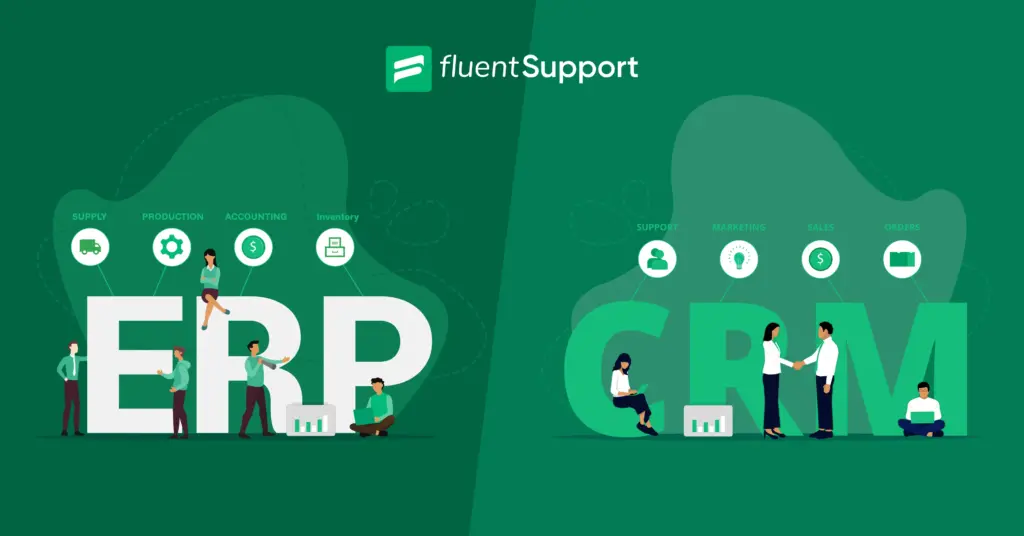

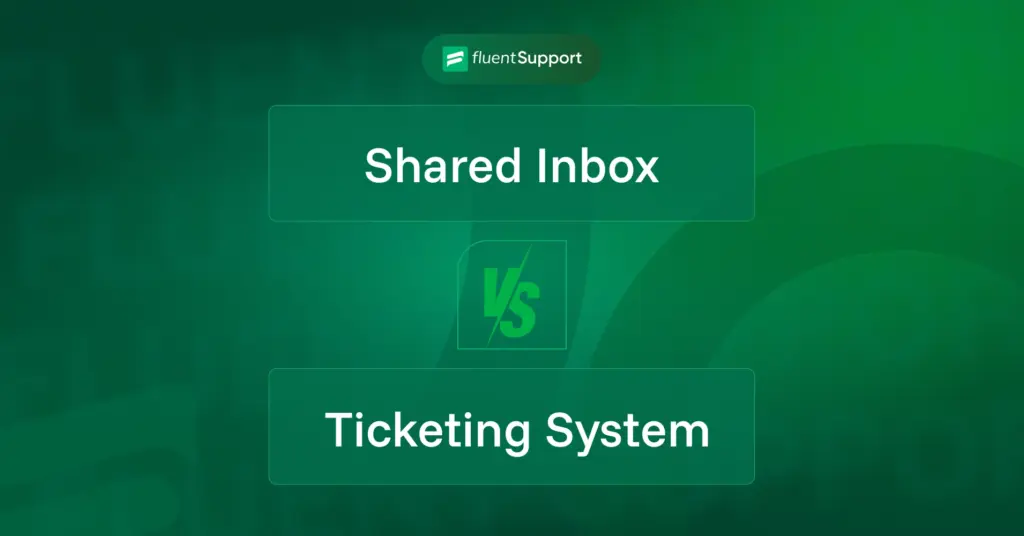
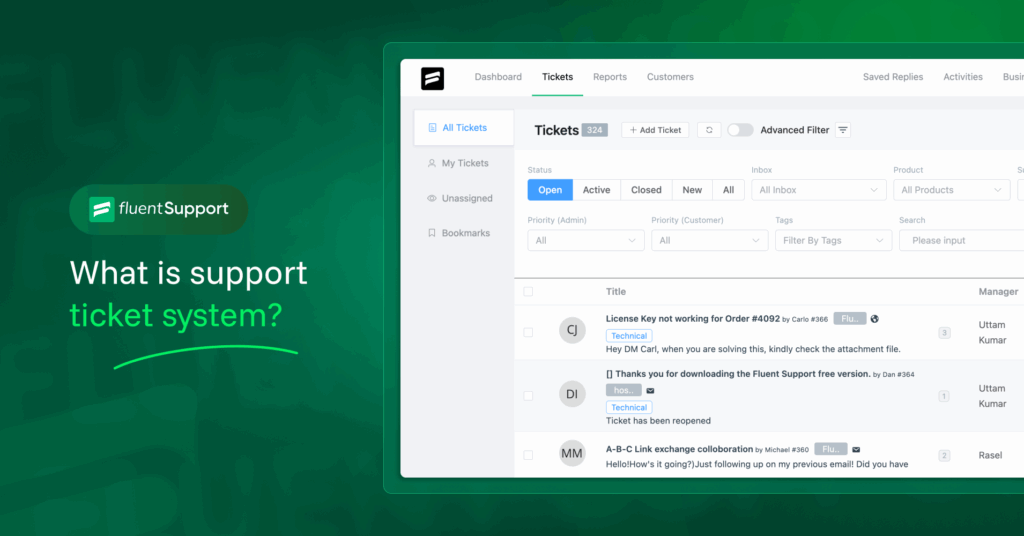


Leave a Reply